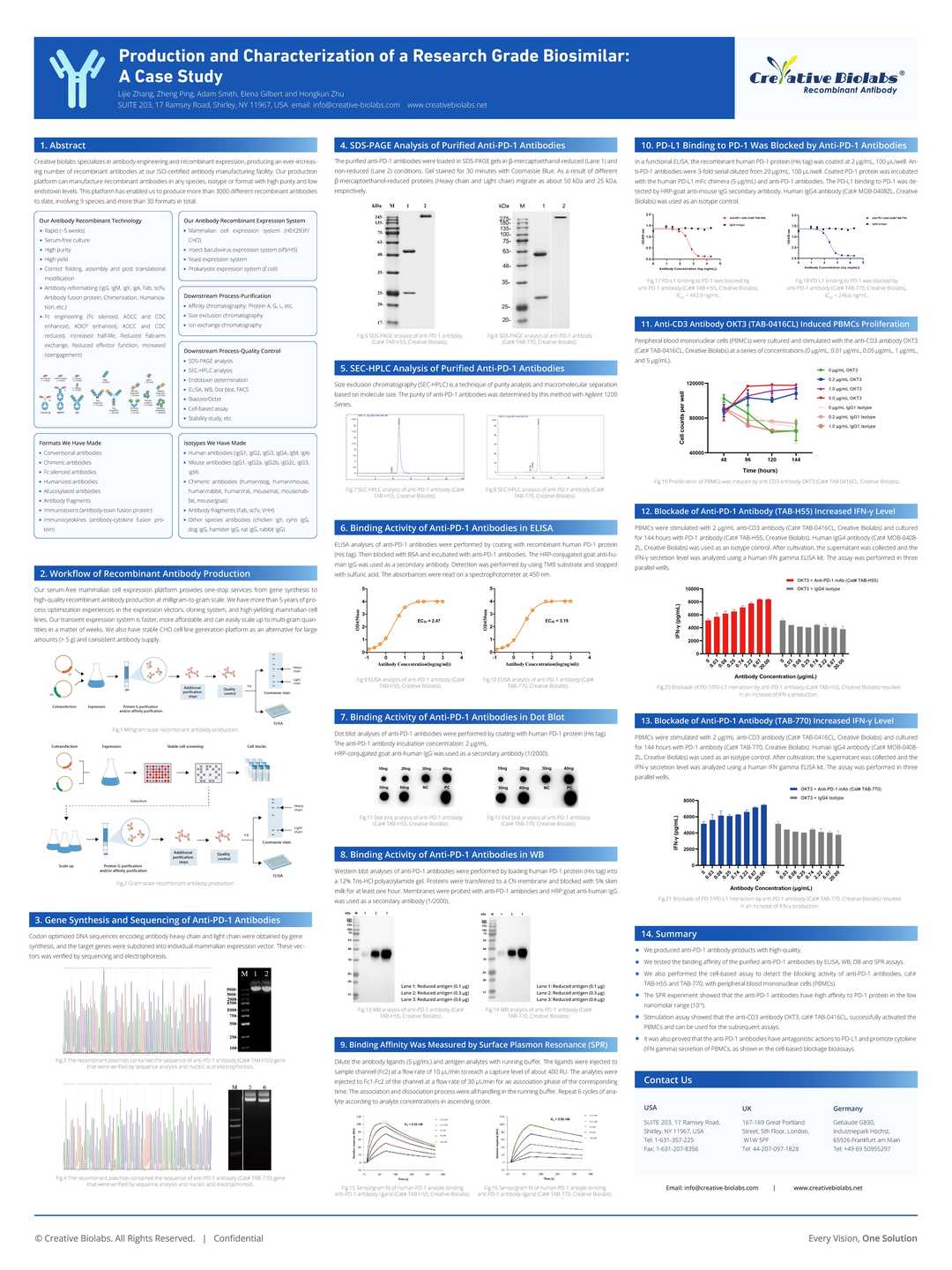Recombinant Rabbit Anti-SEC23A Monoclonal Antibody (JU37-48)
CAT#: MRO-1374-CN
This antibody is a rabbit monoclonal antibody that is capable of binding to SEC23A.






Specifications
- Immunogen
- Recombinant protein within human SEC23 aa 300-500
- Host Species
- Rabbit
- Type
- Rabbit IgG
- Specificity
- Human
- Species Reactivity
- Human, Mouse
- Clone
- JU37-48
- Applications
- Used for immunoassay techniques such as: Western Blot; Immunofluorescence; Immunohistochemistry; Flow Cytometry
- Conjugate
- Unconjugated
Product Property
- Purification
- Protein A affinity purified
- Format
- Liquid
- Buffer
- 1*TBS, pH 7.4, 1% BSA, 40% Glycerol
- Preservative
- 0.05% Sodium Azide
- Storage
- Store at +4°C after thawing. Aliquot store at -20°C or -80°C. Avoid repeated freeze / thaw cycles.
Target
Customer Review
There are currently no Customer reviews or questions for MRO-1374-CN. Click the button above to contact us or submit your feedback about this product.



Q&As
-
I'm interested in how SEC23A functions in the protein transport mechanism. How can this antibody help in my research?
A: This anti - SEC23A antibody can be a valuable tool. In immunoprecipitation experiments, you can use it to pull down SEC23A along with its interacting proteins. By identifying these interacting partners, you can gain insights into the protein-protein interactions involved in the protein transport process. For example, if SEC23A forms a complex with other components of the COPII coat complex during protein transport from the endoplasmic reticulum to the Golgi apparatus, immunoprecipitation with this antibody can help isolate and study this complex. Additionally, in immunohistochemistry, localizing SEC23A in tissues can show where in the cell or tissue the protein transport activity is occurring.
-
I'm conducting a comparative study on SEC23A expression in human and mouse tissues. How does the species reactivity of this antibody ensure reliable cross - species analysis?
A: The antibody's reactivity with both human and mouse SEC23A is based on conserved epitopes between the two species. When performing immunoassays such as immunohistochemistry or Western blot on tissues from human and mouse, you can use the same antibody. However, it's important to note that there may be minor differences in the protein structure or expression levels. You should optimize experimental conditions like antibody dilution and incubation times for each species. This way, you can account for any species - specific variations and ensure reliable cross - species analysis of SEC23A expression, which is useful for understanding the conserved and divergent functions of SEC23A in different organisms.
-
I want to use this antibody in an immunohistochemistry experiment on brain tissue to study SEC23A expression in neuronal cells. What are the key steps to ensure accurate results?
A: First, proper tissue fixation is crucial. Use a fixative that preserves the tissue architecture and SEC23A antigenicity, such as formalin. After fixation, perform antigen retrieval, which can enhance the antibody's access to the target antigen. Since the antibody is specific for SEC23A and has high sensitivity, optimize the antibody dilution. In brain tissue, neuronal cells have a complex structure, so careful washing between steps is necessary to reduce background staining. Also, use appropriate positive and negative controls. A positive control could be a known SEC23A - expressing region in the brain, and a negative control could be tissue incubated without the primary antibody.
View the frequently asked questions answered by Creative Biolabs Support.
Submit Your Publication
Published with our product? Submit your paper and receive a 10% discount on your next order! Share your research to earn exclusive rewards.
Downloadable Resources
Download resources about recombinant antibody development and antibody engineering to boost your research.
Product Notes
This is a product of Creative Biolabs' Hi-Affi™ recombinant antibody portfolio, which has several benefits including:
• Increased sensitivity
• Confirmed specificity
• High repeatability
• Excellent batch-to-batch consistency
• Sustainable supply
• Animal-free production
See more details about Hi-Affi™ recombinant antibody benefits.
Datasheet
MSDS
COA
Certificate of Analysis LookupTo download a Certificate of Analysis, please enter a lot number in the search box below. Note: Certificate of Analysis not available for kit components.
Protocol & Troubleshooting
We have outlined the assay protocols, covering reagents, solutions, procedures, and troubleshooting tips for common issues in order to better assist clients in conducting experiments with our products. View the full list of Protocol & Troubleshooting.
See other products for "SEC23A"
Select a product category from the dropdown menu below to view related products.
| CAT | Product Name | Application | Type |
|---|---|---|---|
| MOR-3199 | Hi-Affi™ Recombinant Rabbit Anti-SEC23A Monoclonal Antibody (DS3199AB) | WB, FC | IgG |
| CAT | Product Name | Application | Type |
|---|---|---|---|
| MHC-LC1960 | PE-A2/Human SEC23A (SLLPPTALVGL) MHC Tetramer | FCM |
| CAT | Product Name | Application | Type |
|---|---|---|---|
| VS-0525-XY6424 | Anti-SEC23A Immunohistochemistry Kit | IHC |
Popular Products

Application: ELISA, Neut, IF, IP, FC, FuncS

Application: FC, IP, ELISA, Neut, FuncS, IF, WB

Application: ELISA, IP, FC, FuncS, Neut, IF, IHC

Application: IF, IP, Neut, FuncS, ELISA, FC, ICC

Application: ELISA, FC, IP, FuncS, IF, Neut, ICC

Application: FC, IP, ELISA, Neut, FuncS, IF, IHC

Application: WB, ELISA, FuncS, IB, FC, SPR, Apop
-4.jpg)
Application: FC, FuncS, IA, IF, IP, IHC

Application: ELISA, FC, Neut, Inhib

Application: ELISA, Activ, Block
-2.png)
Application: WB, ELISA, FuncS
For research use only. Not intended for any clinical use. No products from Creative Biolabs may be resold, modified for resale or used to manufacture commercial products without prior written approval from Creative Biolabs.
This site is protected by reCAPTCHA and the Google Privacy Policy and Terms of Service apply.




















